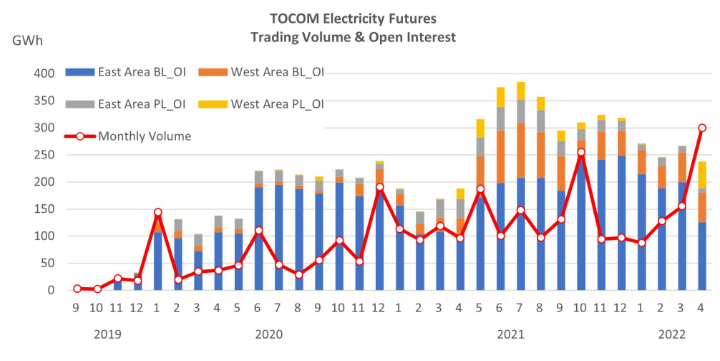TOCOM Energy
Refining margins remain elevated with diesel cracks dominating the strength
Crude oil prices ended the week higher, with supply and demand balances set to remain tight after Saudi Arabia and Russia confirmed the cuts will be extended until the end of the year. Both the IEA and OPEC in its monthly report are optimistic about demand over the course of 2023, leaving the market a substantial deficit in the fourth quarter of this year. For 2024,however, IEA now sees a surplus of 490,000 b/d, compared with a deficit of 160,000 b/d last month.
JPX Dubai prompt month contract settled above 92$/b a barrel, a price unseen in the market since last November, the strength of the market was also underlined by the Dubai structure, which has widened to the highest levels in 10-months with the prompt month and third month spread settled above 3$/b .
Refining margins were steady with diesel cracks dominating the strength. Northwest European diesel crack spread rose to nearly $44 a barrel on Monday, lower September export from Russia and low inventories have helped to push the price higher. The tightness in the diesel market is expected to continue as the global refining industry enters the maintenance season.
The diesel shortage is a worldwide phenomena, with stocks well below the five-year average in most regions including the US, ARA ports in Europe and Singapore. Markets have failed to build sizable stocks ahead of the seasonal surge in demand due to several reasons.
On the demand side, consumption of diesel and other distillate fuel oils is the most sensitive to the industrial cycle, given their widespread use in manufacturing, freight transport and construction. In recent decades, inventories have normally been reset after a period of depletion by a mid-cycle slowdown or a cycle-ending recession, but so far the slowdown has not been deep enough to rebuild them. Secondly, the service sector production has been the primary driver of growth after the pandemic, which requires less diesel consumption and more gasoline and jet kerosene consumption. The cracks of jet kerosene for example, benefited from continued recovery in air traffic, tripled from 13 $/bbl in May to around 40$/bbl in August. Refineries worldwide were maximizing production of gasoline and jet fuel to capture higher margins, this adds more pressure on already tight diesel markets, which may prompt diesel yields to decline.
On the supply side, much of the reason is a lack of adequate refining capacity to keep up with record high demand after the pandemic, while OPEC+ supply cut have squeezed supplies of medium crude oil grades that are middle distillate-rich. This poses a major challenge for refiners as they struggle to find alternative feedstocks
The refining industry estimates that the world lost a total of 3.3 million barrels of daily refining capacity since the start of 2020. On paper, global crude distillation capacity excess stands at 20 mb/d, calculated from a nameplate capacity of 101 mb/d and a seasonal peak in crude processing of 82 mb/d. However, unused crude distillation capacity is due to lack of maintenance and bottlenecks in secondary processing units, where transport fuels such as gasoline and diesel are produced.
In addition to capacity constraints, a spate of unplanned outages exacerbated the situation.
European crude processing dropped by 700,000 barrels a day over the summer from a year earlier due to scorching temperatures, the heat led to refiners cut oil processing by at least 2% globally over those two months according to FGE.
Tightness in the diesel market will probably ease in the first half of 2024 as new refining capacity comes online. In a longer perspective, global refining capacity is expected to expand by a net 4.4 mb/d to 2028, far outpace oil demand growth according to the IEA.






